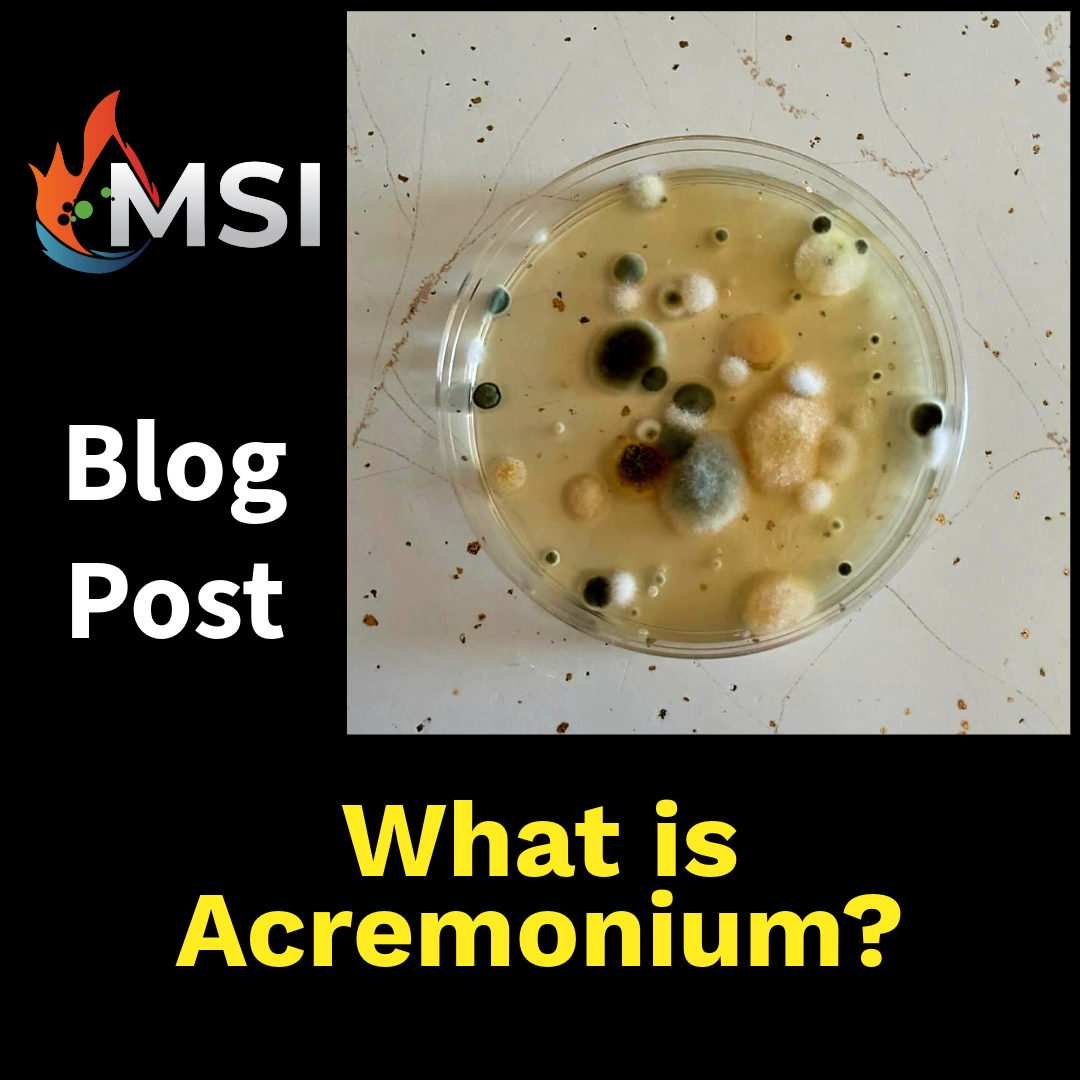With wet conditions, Acremonium grows quite well.. When Acremonium is found indoors, it usually originates either from outdoor air or from contaminated crawl spaces or from contaminated building materials that recently experienced wet conditions like flooding. However, the spores of this fungus are formed in a slimy mass resulting in limited aerosolisation: therefore its prevalence may be low in air samples.
It grows indoors on building materials such as drywall, acoustic and thermal fiberglass insulation and in some cases insulated ducting. Crawl spaces, wet bathrooms with a lack of proper ventilation or exhausting and continuous wet basements are ideal for Acremonium.
Acremonium has often been associated with contamination by Stachybotrys chartarum, which is often referred to as “Black Mold,” as both fungi is favor very wet circumstances. Allergenic reactions to Acremonium includes hay fever, asthma, hypersensitivity and pneumonitis. Potential opportunist or pathogen effects are known to cause hyalohyphomycosis, keratitis, mycetoma, and onychomycosis. Also known to cause infections in immunodeficient patients and causes infections in persons with wound injuries.
When mold is found in your home, trust the professionals at Mold Solutions & Inspections to properly handle the removal the first time under the guidance of the IICRC protocols.
